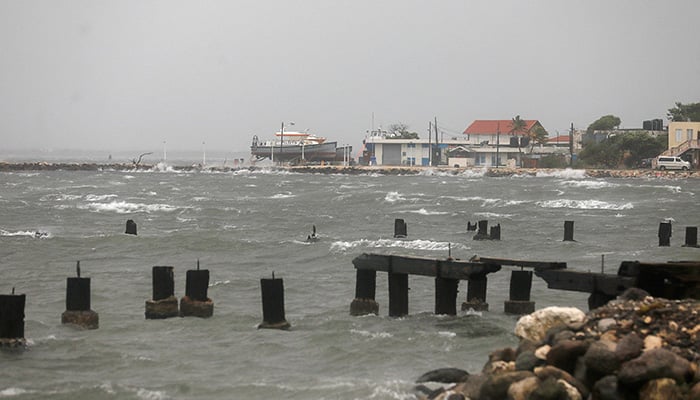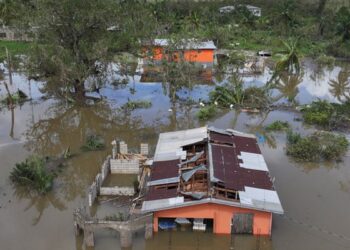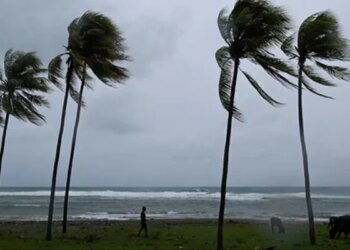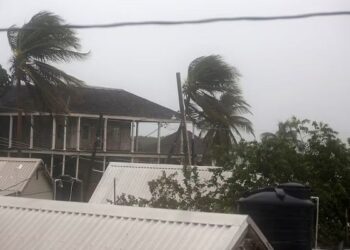Select Language:
Hurricane Melissa made landfall in Jamaica on Tuesday as a Category 5 storm, according to the latest update from the U.S. National Hurricane Center (NHC). It ranks among the most powerful hurricane landings ever recorded in the Atlantic basin, the NHC noted.
Earlier, the NHC reported that the storm, the maximum intensity on the Saffir-Simpson scale, was approximately 34 miles southeast of Negril, Jamaica, at 4:00 p.m. GMT. It was producing sustained winds of 183 miles per hour, with stronger gusts. The Miami-based hurricane center warned that Melissa’s path could lead to widespread structural failures.
Anne-Claire Fontan, a tropical cyclone specialist with the World Meteorological Organization, described the situation as catastrophic. “For Jamaica, this will be the storm of the century for sure,” she said during a press briefing.
Satellite images showed Hurricane Melissa southeast of Jamaica at 12:00 UTC on October 28, 2025. Forecasters anticipated storm surges reaching up to four meters, coupled with rainfall exceeding 27 inches, which could cause severe flash flooding and landslides.
Haiti and the Dominican Republic have already experienced days of heavy rainfall, leading to at least four fatalities. In Jamaica, local reports indicated that three people had died during storm preparations.
The NHC projects the storm will impact Jamaica on Tuesday, maintaining its strength as a powerful hurricane when crossing eastern Cuba, then moving over the Bahamas and Turks and Caicos by Wednesday. The Bahamian government has ordered evacuations in the southern and eastern parts of the islands, while Cuba has evacuated around 500,000 residents from vulnerable areas.
Melissa’s slow progress over unusually warm Caribbean waters contributed to its rapid intensification, with forecasts predicting up to 30 inches of rain in parts of Jamaica and up to 12 inches on Hispaniola.
The Red Cross estimates that approximately 1.5 million people in Jamaica could be directly affected by the hurricane. Necephor Mghendi, an official with the IFRC, highlighted the challenges ahead, noting, “Today will be very difficult for tens of thousands, if not millions, of people in Jamaica. Roofs will be tested, floodwaters will rise, and many will face isolation.”
To facilitate effective aid distribution, essential supplies such as tarps, hygiene kits, blankets, and clean drinking water have already been pre-positioned at Red Cross facilities across the island, with over 800 shelters prepared for evacuees.
Prime Minister Andrew Holness mandated mandatory evacuations in southern Jamaica, including the historic Port Royal. He warned of extensive damage to farms, homes, and infrastructure, emphasizing that the island’s facilities are not built to withstand a Category 5 hurricane. The government has allocated a $33 million emergency response budget, alongside insurance and credit lines to cover damages, slightly exceeding the impact of Hurricane Beryl—an early record-setter for rapid intensification into a Category 5 storm.
Scientists continue to warn that climate change-driven warming of ocean waters is likely to produce stronger, faster-moving hurricanes. Chief Meteorologist Jonathan Porter from AccuWeather remarked, “Slow-moving major hurricanes often become some of the deadliest and most destructive storms in history. We are witnessing a dire situation unfolding in slow motion.”







